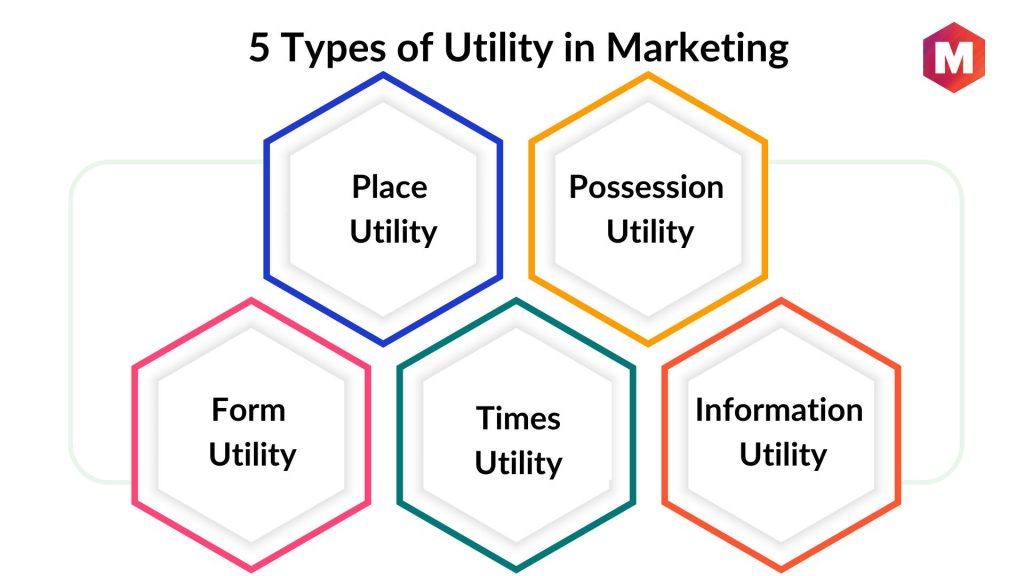Definition: Utility marketing is a type of marketing that demonstrates how a product can be valuable to a consumer’s life as a way to encourage them to purchase it. An example of utility in marketing would be a company that sells kitchen appliances. They can demonstrate the utility of their product by showcasing how it will make cooking easier, faster, or more efficient.
In simple words, it is a way of marketing the utility of a product or service to a customer. The dictionary meaning of the word Utilitythe state of being useful, profitable, or beneficial, and utility in marketing refers to the benefit or value a customer can receive from a product or service.
Table of Contents
What is Utility in Marketing?
Utility marketing is a marketing strategy of communicating the value or usefulness of a product to a consumer in a way to convert them to purchase. Many times during product design itself, utility is involved so that the customer is convinced to buy the product. It is a situation where a marketer tries to convince a consumer that the product they are exchanging their money for will provide them with maximum satisfaction.
The Place Utility marketing model in an economic system is a model used to help producers and marketers to design and deliver their products in such a way that is likely to attract more customers as well increase sales and profits. Marketing utilities are a significant aspect of marketing that every business should understand. This is because having a clear understanding of these utilities will enable you to take advantage of different ways to reach consumers and give added value to your products.
Why is Utility Marketing Important?
Marketing utility is essential because it helps businesses to create value for their customers and make them loyal buyers. By creating a better customer experience, businesses can make their customers feel valued, resulting in higher customer satisfaction and loyalty.
Additionally, by providing utility in your marketing efforts, you are also able to build relationships with current and potential customers, create a positive brand image, and increase sales.
Utility marketing is an important tool for businesses as it allows them to communicate the value of their product or services to potential buyers. Through targeted marketing campaigns, businesses can create customer value by offering discounts and promotions, as well as providing advice and support. By developing a strong understanding of the utility offered by their products or services, businesses can make sure that their customers are happy with what they receive in exchange for their money.
5 Types of Utility in Marketing
1) Form Utility
The utility of form refers to the product that an organization offers to its consumer base, for example, bread, electronics, vehicles, etc.
A product’s form is related to the whole process of transformation of raw material into a finished good. This process is often done by one or more partner companies and involves active participation from the marketer, telling the productive chain what consumers expect from the product, how it should look like and what should it do.
Form as a type of utility marketing allows the consumer to see the value of a product when it is in its finished form. For example, consumers of bread will not see the value of bread if it is presented as wheat flour. It is because it is being offered as an end product that consumers see value in it. Similarly, Mobile phones beat landlines and laptops beat desktops because of their form utility.
2) Place Utility
Proper marketing requires that finished goods be made available at places where customers can easily and comfortably access them.
Place utility is therefore in a way related to a distribution channel. This means that for consumers to buy products, generally speaking, they must be physically available in a store or shop or virtually available online. Of course, place utility requires more effort in this matter since you will have to deal with transportation, choosing the best place to sell (retailer, wholesaler), shelf space, and so on. This is so that consumers can conveniently get goods in a location that they can quickly and easily access.
Example – When you go to a picnic, at an exotic location, you might be paying double the amount for accommodation as well as for food and traveling. You are paying this much amount because of the place you are in and hence the factor of place as utility marketing. So a New York condo will always be costlier than one in Texas.
Increased convenience always works well with customers where product marketing is concerned. When you make your products readily available to consumers however expensive it may be, they will see more value in it compared to products that are not readily available. This means that purchases will go up, and therefore profits will too- making it a win-win for everyone.
Therefore, as you develop marketing and supply mechanisms, remember to factor in the issue of customer convenience by availing your products in all major stores and also in the remotest of areas where you have a potential customer base.
3) Times
Of the four types of utility marketing, time is another key component to successful product marketing. This kind of utility is related to the difference in time between the creation of a product and its final consumption by the consumer. As a marketer, you must know and be able to manage this difference if at all success is one of your objectives.
Similarly, if you are in the business of providing services to consumers, you must also address the issue of time efficiently. This means that you have to make your services available when and where customers need them.
For example – A major success factor for Amazon and other E-commerce players has been the time factor – The way they deliver ordered material very fast to the customer. The faster they deliver, the more the increase in market share. Similarly, McDonald’s is a famous fast food chain because you know that you will have a delicious burger in your hand within a minute of walking into McDonald’s. Domino’s used the utility marketing funda of time to perfection when it promised pizza delivery within 30 minutes or the money would be returned.
4) Possession Utility
5) Information Utility
Information utility is the value customers receive from accessing the information associated with a particular product or service. This type of utility often plays a key role in customer decision-making, as they want to have access to all necessary information before making their purchase decisions.
For example – When a consumer goes online to make a purchase decision, he/she will likely research the product or service first. He/she will look for reviews, ratings, pricing, and other related information before making a final purchase decision.
This enhances their knowledge about the product they are buying and also helps them to make informed decisions, thus adding value to their overall shopping experience.
Conclusion!
Thinking about all these types of utility marketing is crucial to meet consumers’ expectations. You need knowledge about the product you are advertising, you need to know if it will be available for your customers and how they will get it and you must also find out when the best time to offer the product to consumers is.
Finally, one cannot overlook the importance of understanding consumer spending habits when it comes to utility marketing. By understanding the customer’s needs, companies can craft their offerings and services in a way that appeals to their prospective consumers. With data-driven insights into consumer behavior, businesses can design their products and services in ways that will help them gain more customers and boost sales.
Liked this post? Check out the complete series on Marketing



